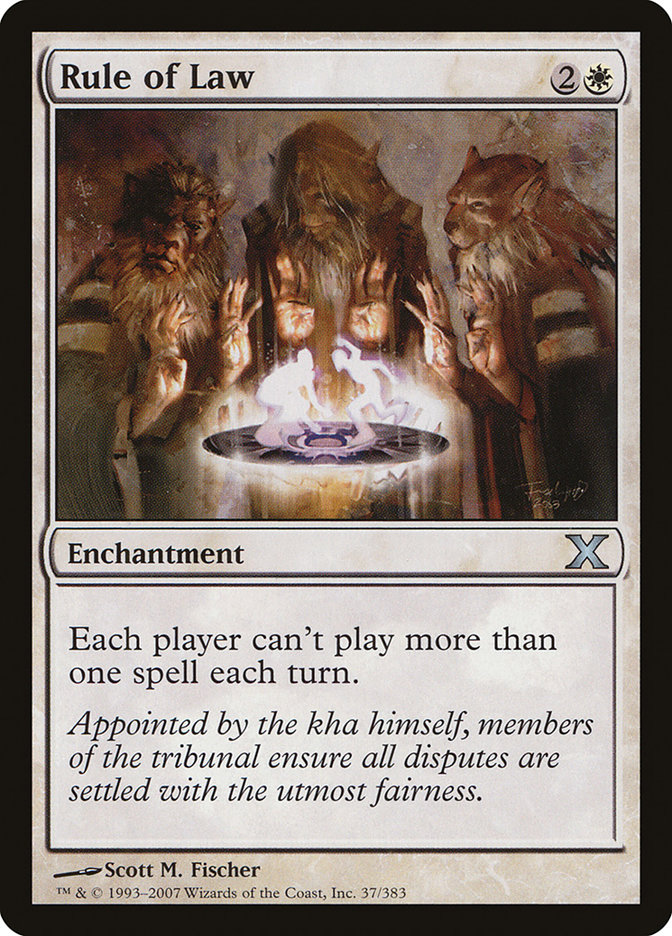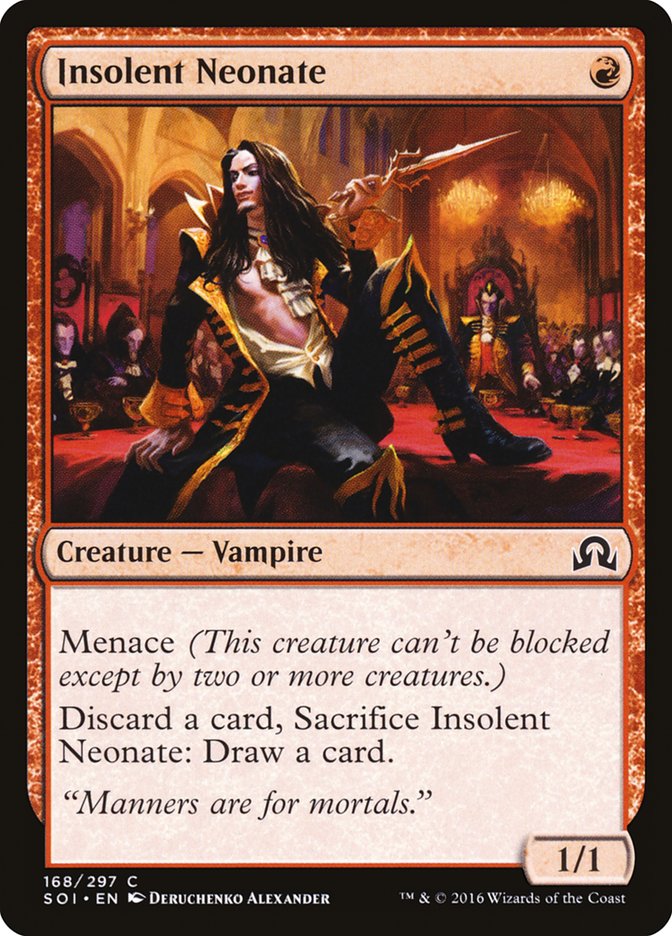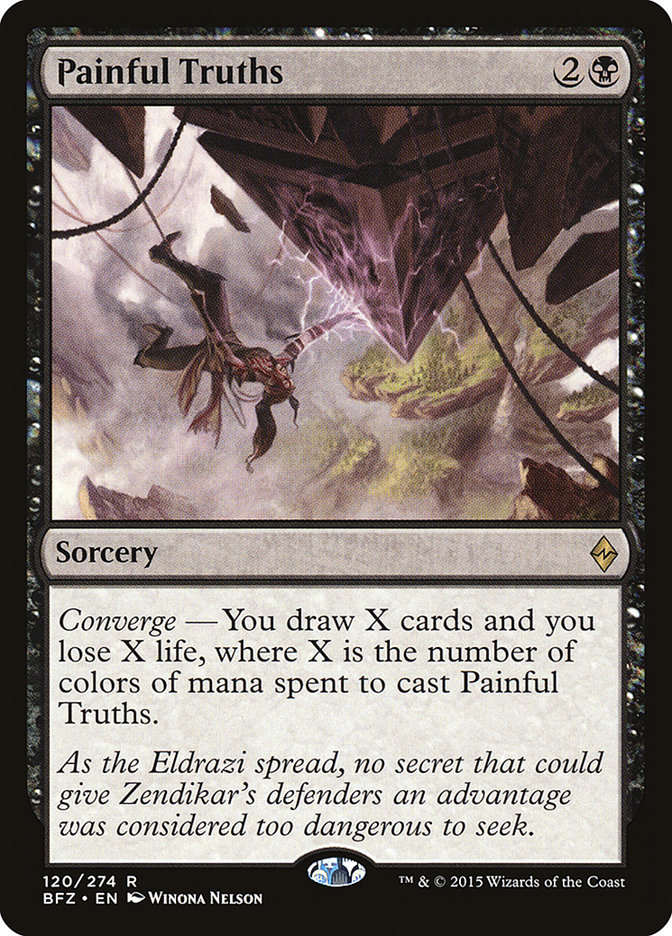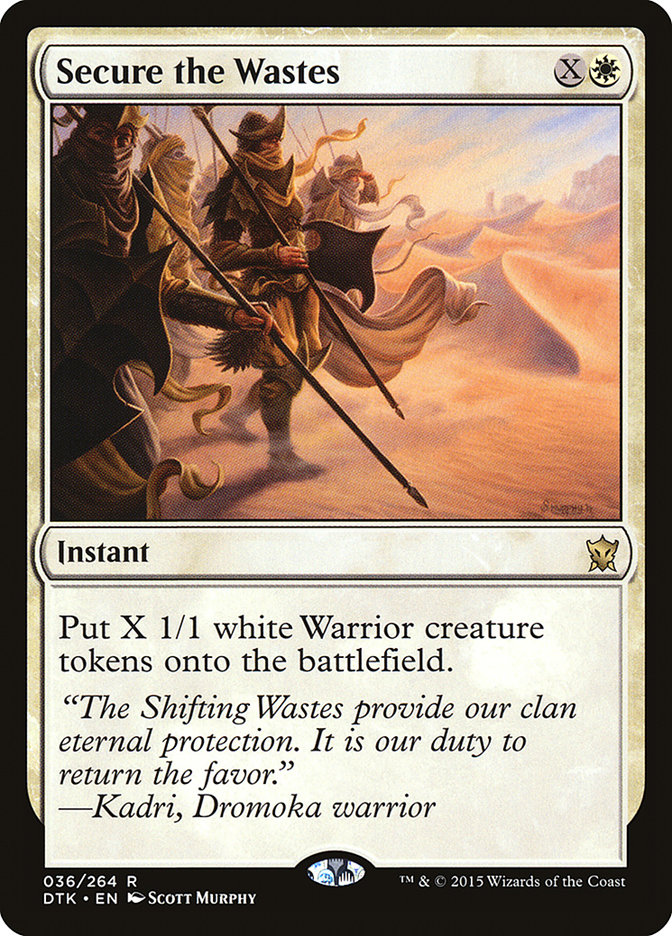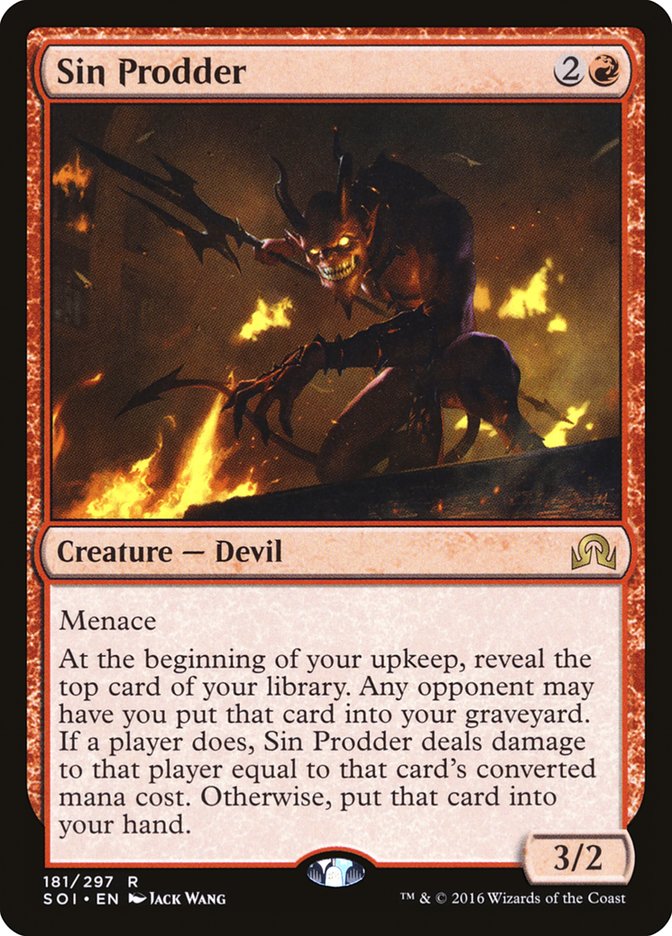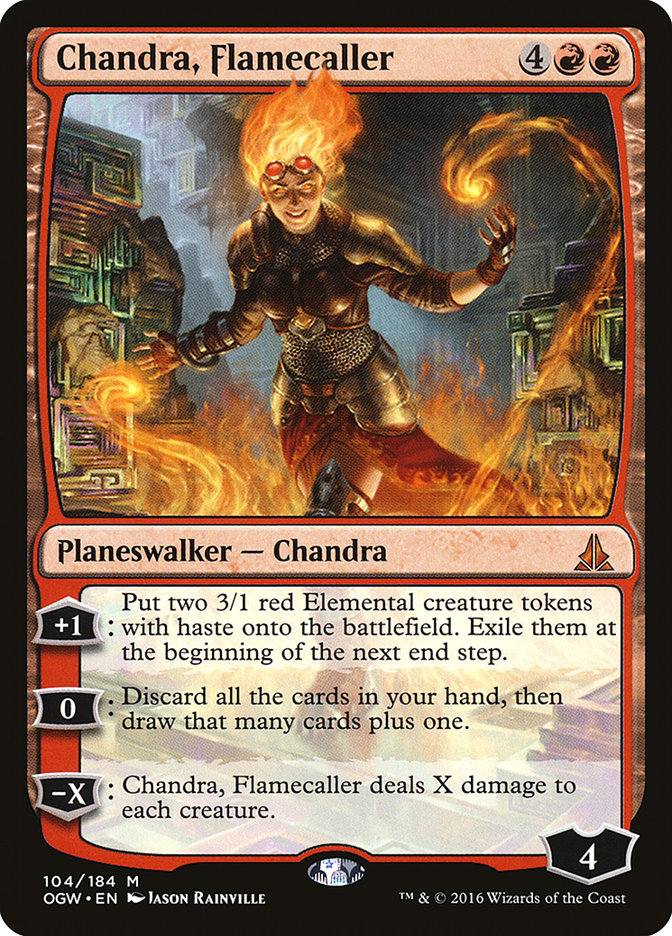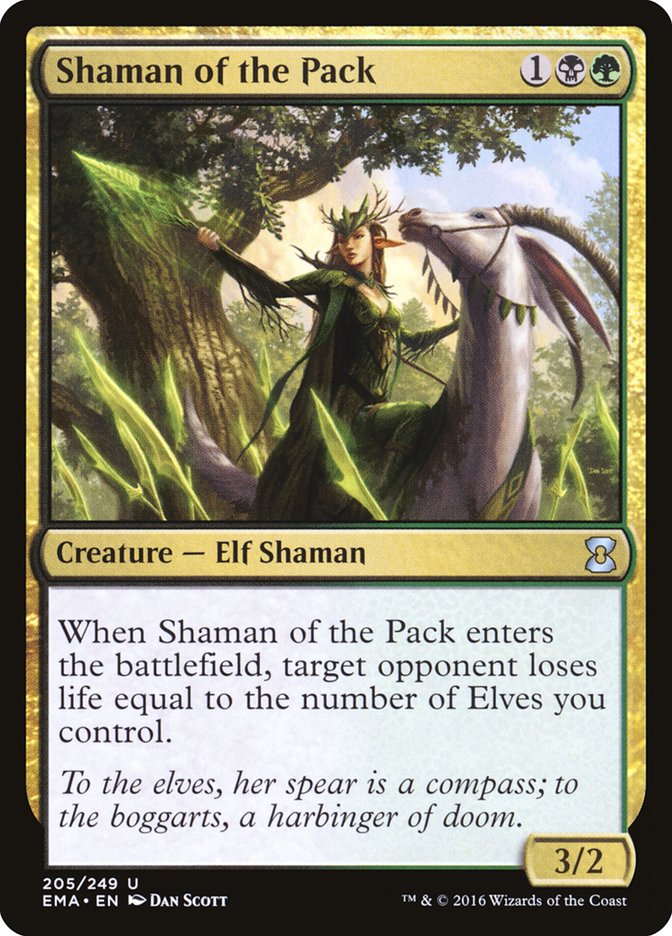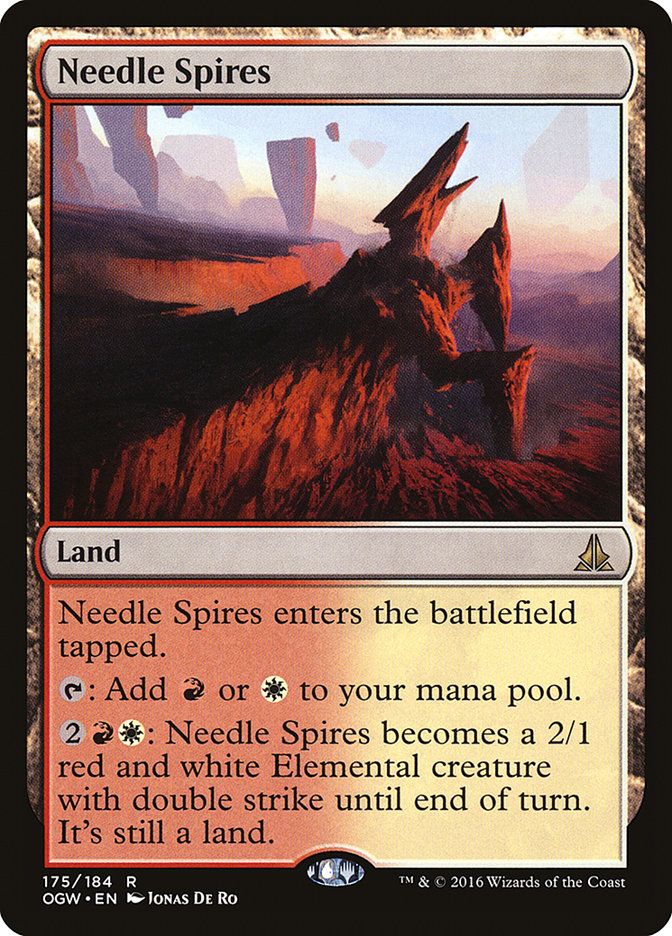Rules are rules.
We get used to following a strict set of guidelines when we play Magic. Cast spells during this part of the turn. You lose the game if you have zero life or less. Don’t keep showing your opponent the cool card you just drew, Matt. There are even cards that add new rules to the game!
Regulations, both general and specific, create an environment where people can play this card game we love in a method upon which we can all agree. We even make up new rules to play the game in new and exciting ways, and some of those new rules become so popular that cards are printed just for them.
But there’s one rule that goes a bit more unspoken, and so we take it as something deeper, more inwardly held, than we probably should: “You can’t make a deck with XYZ,” or analogously, “A deck with card XYZ is a bad deck.”
Many players will happily provide their opinion, solicited or otherwise, about a card you like. It might be a card you’ve kept on the back burner for a while, a card with which you see a considerable amount of potential. If the dichotomy between what you hear about the card and how you feel about it is strong enough, you can move from receptive to defiant. “What do they know anyway?”, you might tell yourself. You’ll scribble up a list, sleeve it up, and set out to prove them wrong.
For me, this card comes in the form of a bizarre 1/1 with an attitude: Stern Constable.
Most of the time, white is about enforcing the rules: since the unorthodox color pie experimentation of Planar Chaos and, to a lesser degree, New Phyrexia, white is the color of choice when it comes to shackling the deviant and neutralizing the anomaly. In the world of Innistrad, though, sometimes peace and order come at a cost. Stern Constable provides an incredibly efficient effect at an incredibly low mana cost, one that would have once been seen as strictly worse than its contemporaries.
One-mana combat manipulators are nothing new, and their power level has been on the decline for decades. The all-powerful Mother of Runes gave way to Infantry Veteran, which became slightly more efficient with Goldmeadow Harrier, which turned into Stern Constable’s direct predecessor, Akroan Jailer. Akroan Jailer, despite its dull stats and overcosted tap effect, was still a great card in Magic Origins Limited. How much better would Stern Constable be, given that it required no mana to activate?
Well, losing a card is a cost.
White might want spells in the graveyard to fuel its many delirium-related cards, but it doesn’t have any madness cards of its own. Stern Constable’s ability to keep a creature on mana-free lockdown is great, but bleeding cards will have an enormous impact on your ability to keep the pressure up. Thus, combining madness cards with the ability to cheaply enable them and leverage a tapped creature should put is in a powerful position.
The Neonate and the Constable, while polar opposites of each other on the flavor scale, both provide manaless discard at instant speed. In my previous experimentation with madness spells, the more cheaply you can activate the discard effect, the easier it is to actually use the mana reduction of the madness cost to get ahead on resources.
To offset the fact that I’ll often be discarding cards at a loss and will constantly want cheap fodder to toss under the madness bus, I’ll need some draw power.
Black has its own array of madness spells, as well as a couple of key enablers. Stern Constable, and the white it represents, would provide some unusual but intriguing combinations of interactions and spells. White can’t be at the forefront, but it can play a critical sideline role.
Okay, white madness, here we come!
Creatures (17)
- 3 Incorrigible Youths
- 1 Heir of Falkenrath
- 1 Ravenous Bloodseeker
- 1 Olivia, Mobilized for War
- 4 Asylum Visitor
- 4 Insolent Neonate
- 3 Stern Constable
Planeswalkers (1)
Lands (25)
Spells (17)

This deck had some of the best madness cards in the format, packed into a stack of conditional enablers. Sounds risky to me!
While I toyed with the mana and the numbers in the maindeck and sideboard before a Commander event last Wednesday, I couldn’t quite nail the numbers down. The mana seemed to be a challenge, so I was grateful I had some extra time to — what? Standard pairings are posted for Round 1? Oh, tonight’s Standard? Great. Baptism by Fiery Temper, I guess.
Round 1 – G/W Tokens
My first opponent, Jacob, has shared many rounds of one of my Cubes with me over the last several Wednesdays, but we didn’t often cross in the Standard ring. As I produced a couple of ugly Insolent Neonates, I got smashed to pieces by a timely, crippling Secure the Wastes, backed up by Gideon, Ally of Zendikar. Oh.
I looked at the sideboard I’d finished about eight minutes earlier. This card seems good…yeah, Rending Volley has plenty of targets. Sweepers seem powerful, I guess. Oh, wait, I’ve sideboarded fifteen cards. Guess I’ll just cut the vast majority of the deck’s nonsense.
In a powerful display, Nahiri, the Harbinger and Sin Prodder brought me back from the brink of many near-losses in Game 2. His planeswalkers and token producers were swinging hard, but I wouldn’t yield, scraping back life points with Shambling Vent. I was at four life with an unfortunate Painful Truths in my hand. I had to find a removal spell, so I spent three and dipped to one, drawing a Fiery Temper as my second card.
As Nahiri sat at fourteen counters, I realized I had no real targets for her ultimate. With my Sin Prodder against two planeswalkers, a 0/1 Plant token and a 2/2 Knight Ally token on his side, I found another Sin Prodder, cast Fiery Temper on his Knight Ally, and swung at his two planeswalkers with one Prodder each, eliminating his planeswalker threats as one. He never managed to deal a point of damage to me, and I clinched Game 2.
Game three went to time after just a couple turns. I had an aggressive start, but on the last of our final five turns, he cast a Secure the Wastes to put up enough defenses to protect himself from the lethal attack.
I’m fine with drawing against one of the format’s most powerful decks. Too bad it was with very few of the cards I designed this deck around.
Round 2 – Mardu Control
In Round 2, I played against a Mardu Control opponent who deployed planeswalkers and a whole lot of removal to do his dirty work for him. He struggled to find mana in one game and removal in the second, while I drew Sin Prodder after Sin Prodder. Once he thought he’d stabilized, I ripped Chandra, Flamecaller off the top and blasted him to pieces a turn later.
Round 3 – Elf Company
My Collected Company opponent was on the most straightforward of plans: find as many copies of Shaman of the Pack as possible and keep himself and his Elves alive long enough to do some damage with them.
In the first game, I was able to get Olivia, Mobilized for War right on time. Incorrigible Youths, complete with a Gryff’s Boon, decimated my opponent a couple of turns later.
I sided out the same seven creatures I’d been subbing all night (four Insolent Neonate and three Stern Constable) to make the deck more of a control build and tried to finish the job for a (technically) undefeated night. Alas, my opponent put together so many creatures that I was defenseless to stop him, and Shaman of the Pack drained every ounce of life from me while I floundered.
Game 3 saw me lose more life to my manabase and Painful Truths than to Shaman of the Pack. I kept his creature count under control, so he failed to resolve a Shaman of the Pack trigger that drained more than just a couple of points of life. Chandra, Flamecaller swept up the rest and closed the game herself.
So that’s pretty good, right? Three solid decks, two of which have seen success at high levels, fell to my list. Sadly, though, very little of it was thanks to the madness aspect of the deck. This was not a Mardu deck. It was a B/R deck splashing Nahiri, the Harbinger. So, in my estimation, this deck was ultimately a failure.
Mana was a baffling puzzle; without Nomad Outpost, I had to cobble together a patchwork of lands that never provided the exact right combination of flexibility and life preservation that I needed. The creature-lands were poorly supported, thanks to a low quantity of painless white sources, which usually just ended up being each other. This was my first outing with Sin Prodder, and while it impressed me a lot in a deck with lots of high-cost cards reduced by madness, it ultimately felt like cheating, given the original scope of the deck.
Black was probably the most critical underperformer. The black spells in the deck were not remotely as powerful as the red or white ones, and it just flubbed up the deck’s consistency. Cutting it was an easy decision.
Red and white might be better aligned to the deck’s original plan of using Stern Constable’s cheap battlefield control and low-cost madness spells to gain a life advantage. Then I can blast them with powerful cards like Avacyn’s Judgment. Let’s get back to basics!
Creatures (16)
- 2 Iroas's Champion
- 4 Incorrigible Youths
- 2 Ravenous Bloodseeker
- 4 Bloodmad Vampire
- 2 Insolent Neonate
- 2 Stern Constable
Planeswalkers (2)
Lands (25)
Spells (17)

This is an aggressive tempo deck with an incredible amount of reach. And this is where Stern Constable belongs.
With this deck, you can see some truly horrifying starts. Turn 1 Constable, turn 2 tap down Sylvan Advocate and cast Bloodmad Vampire. Turn 3 Senseless Rage, smack you for six. Then you’ve got a 7/4 and free removal to their two lands. Good luck.
I was able to test this deck a bit, and although it had lower raw power, it was much more satisfying to play. Stern Constable offered an amazing amount of battlefield presence. Controlling a creature without paying mana is incredibly rare these days, and the madness cards were good enough that I felt okay discarding cards. The creatures were all incredibly efficient, way below their cost-to-power ratio. Four power for two or three mana is a lot, even if you have to jump through some hoops.
I especially loved Murderer’s Axe. It allowed me to, with five mana, activate Needle Spires and equip it with the card I just drew, whether or not I could cast it, giving me a 4/3 double strike creature out of nowhere. While the deck lacked the true card advantage Painful Truth affords, I didn’t miss it at all. Nahiri, the Harbinger and Stern Constable worked together to exile freshly cast creatures, and I got to cast Avacyn’s Judgment with all of my mana available to me. It was a tempo deck, trading card advantage and power with critical combats, finishing them off before they knew what hit them.
There’s a new sheriff in town; I’d follow his rules.
I think that black madness and white can be made to work together, too. Have you experimented with black’s madness spells in a way that worked out? Has Stern Constable been a nice role-player for your madness decks too? Or am I just a bit mad?


